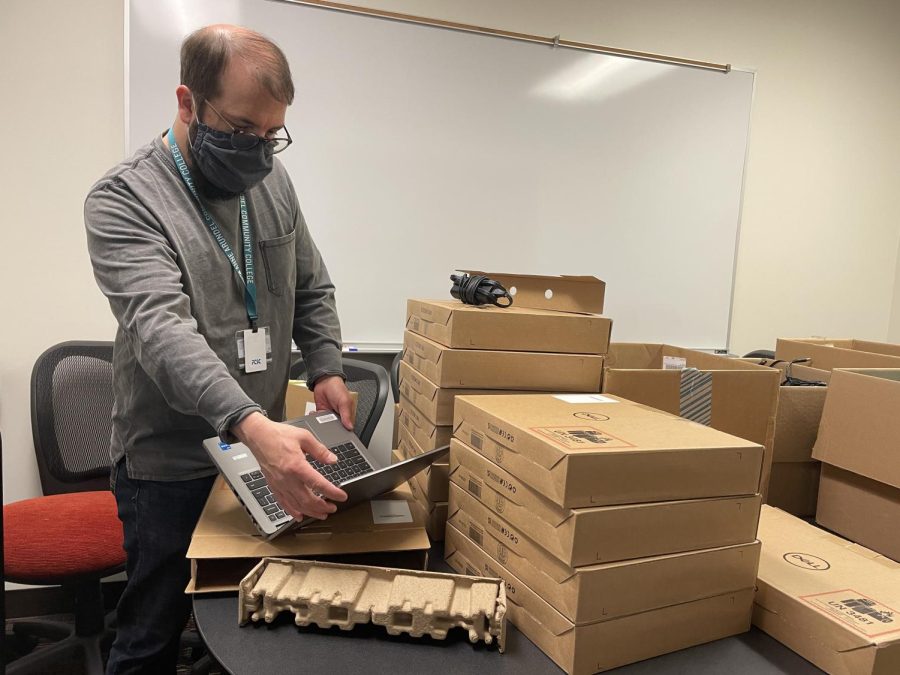AACC uses pandemic aid on student, college needs
Student assistant supervisor Corey Allender unboxes loaner laptops.
April 20, 2022
Since the start of COVID, AACC received upward of $31 million in federal aid to help the college and its students through the pandemic.
Associate Vice President for Learning Resources Management Andrew Little said AACC got money to spend on the college and funds to give to the students.
“We were eligible for both institutional support and student support,” Little said. “So in general, we had about $13 million in aid that we received … that went out directly as student aid to students. And then we had eligibility for about $19 million in institutional support.”
The other $9 million was given to the college in The Coronavirus Response and Relief Supplemental Appropriations Act.
Little said the college put the money into tools that students need for succeeding at AACC.
“[For example] we purchased laptops for loaner programs for students,” Little said. “We had hotspots available to make sure that they had access to [the] internet. We did COVID testing through that process …[and improved] our ability to deliver distance education, providing support structures for students in that remote environment, things like that.”
In spring 2020, AACC received $4,315,345 as part of the first round of pandemic financial aid from the Department of Education.
The aid was part of the Coronavirus Aid Relief and Economic Security or CARES Act, the first of three financial relief packages during the pandemic.
The college also received funding in 2021 from the American Rescue Plan Act, or ARPA, and the Coronavirus Response and Relief Supplemental Appropriations Act.
An AACC press release on federal emergency student aid funds said the college received $17,094,453 from ARPA, 50% of which went to helping students with “expenses related to the disruption of college operations due to coronavirus.” These expenses could include food, housing, health care or child care, for example.
The college received $9,667,547 from the Supplemental Appropriations Act, including $2,157,673 that went to assisting students with “exceptional needs” and emergency costs.
Some students at AACC said they agreed with how the college used the funds.
Still, first-year biology student Joy Heath said she wished the college gave more money to students.
“A little more wouldn’t hurt just because most of the people coming here are … not as flexible with their money as people who are going to a traditional four year university,” Heath said.












